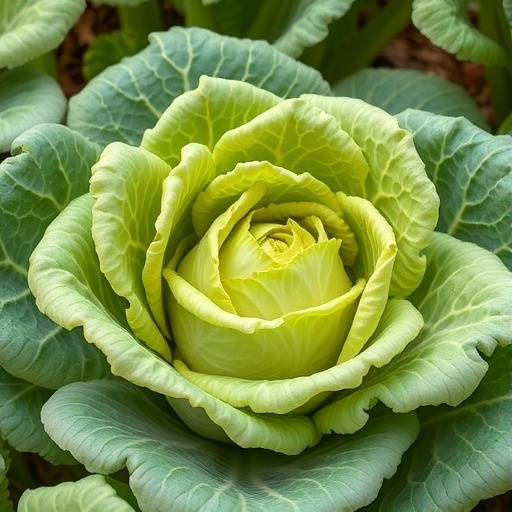The world is currently witnessing an unprecedented rise in the importance of sustainable agricultural practices. In many regions, particularly in developing countries, food production is a growing concern. Among these crops, head cabbage stands out due to its versatility and the increasing demand across various markets. A recent study conducted by Ayalew and Girma shines a spotlight on the market supply and profitability of head cabbage production in northwest Ethiopia, a region poised at the crossroads of agricultural potential and sustainable development.
Ethiopia is known for its diverse agricultural landscape, with regions varying significantly in climate and soil type. This diversity is advantageous for the production of various crops, including head cabbage. The study illustrates the growing relevance of head cabbage within the local and national market. With its relatively short growth cycle and ability to thrive in less-than-ideal conditions, head cabbage has emerged as a critical crop for smallholder farmers in northwest Ethiopia.
Market dynamics play a crucial role in agricultural production, impacting the livelihoods of farmers and their economic sustainability. The research by Ayalew and Girma delves into the intricate market mechanisms governing the supply and profitability of head cabbage. By systematically analyzing market trends, they reveal the influences of consumer preferences and local agricultural practices. This analysis provides an essential understanding of how market forces shape production decisions, thereby influencing the overall profitability for farmers.
The profitability of any crop is frequently influenced by multiple factors, including production costs, market prices, and yields. In their research, Ayalew and Girma provide a comprehensive evaluation of these profitability determinants. They emphasize that input costs, such as seeds, fertilizers, and labor, can significantly impact farmers’ net earnings from head cabbage production. This information is highly valuable for farmers aiming to enhance their profitability while also considering sustainability.
An often-overlooked aspect of agricultural production is the role of local markets and supply chains in facilitating access to consumers. The study highlights the importance of efficient supply chains in ensuring that fresh head cabbage reaches consumers promptly. By analyzing the flow of produce from farms to markets, the authors showcase how logistical challenges can affect overall market supply and, hence, profitability. Understanding these dynamics allows farmers and policymakers to implement strategies that enhance efficiency and market access.
Moreover, this research finds that there is a robust demand for head cabbage, both within local markets and in urban areas. This demand is significant because it creates opportunities for farmers to expand their operations and increase their incomes. The authors argue that meeting the rising demand for head cabbage can contribute positively to the economic stability of farming communities in northwest Ethiopia.
Furthermore, the study delves into the social aspects of head cabbage production, recognizing the role of community engagement and cooperative farming. Collaborative efforts among farmers can lead to shared knowledge, pooled resources, and collective bargaining power in the markets. The significance of such social structures cannot be understated, as they foster resilience and sustainability within farming communities.
In addition to economic considerations, Ayalew and Girma emphasize the environmental implications of head cabbage production. Sustainable agriculture practices, such as organic farming, crop rotation, and integrated pest management, are discussed as ways to maintain soil health and reduce the reliance on chemical inputs. These practices are vital for long-term agricultural productivity and environmental stewardship, making head cabbage not only a viable crop choice but also an environmentally responsible one.
The researchers also touch upon the role of technology in enhancing cabbage production in this region. The advent of innovative farming techniques and tools offers farmers new ways to improve yield and streamline production processes. From improved irrigation methods to the use of precision agriculture tools, technology could serve as a catalyst for greater productivity and profitability in head cabbage farming.
However, it is crucial to measure these advancements within the context of local knowledge and existing practices. The balance between adopting new technologies and maintaining traditional agricultural wisdom is fundamental to sustainable development. Ayalew and Girma advocate for a harmonized approach that embraces innovation while respecting local agricultural practices and ecological conditions.
Policy implications stemming from this research are significant as well. Policymakers can utilize the findings to shape frameworks that support head cabbage production through subsidies, training programs, and market access initiatives. A focus on sustainable agricultural practices, coupled with economic incentives, could enhance productivity and profitability for farmers while contributing to food security in the region.
In closing, the study conducted by Ayalew and Girma offers invaluable insights into the dynamics of head cabbage production in northwest Ethiopia. By intertwining market analysis, profitability evaluation, and sustainability discussions, the research provides a holistic view of the challenges and opportunities faced by smallholder farmers. As Ethiopia navigates its agricultural future, understanding and improving this critical segment of the market will be essential for enhancing the livelihoods of rural communities and achieving sustainable food systems.
Subject of Research: Head cabbage production in northwest Ethiopia
Article Title: Market supply and profitability of head cabbage production in northwest Ethiopia
Article References:
Ayalew, A., Girma, Y. Market supply and profitability of head cabbage production in northwest Ethiopia. Discov Sustain 6, 1217 (2025). https://doi.org/10.1007/s43621-025-02141-5
Image Credits: AI Generated
DOI: https://doi.org/10.1007/s43621-025-02141-5
Keywords: head cabbage, market supply, profitability, sustainable agriculture, Ethiopia, smallholder farmers, agricultural practices, environmental sustainability.




